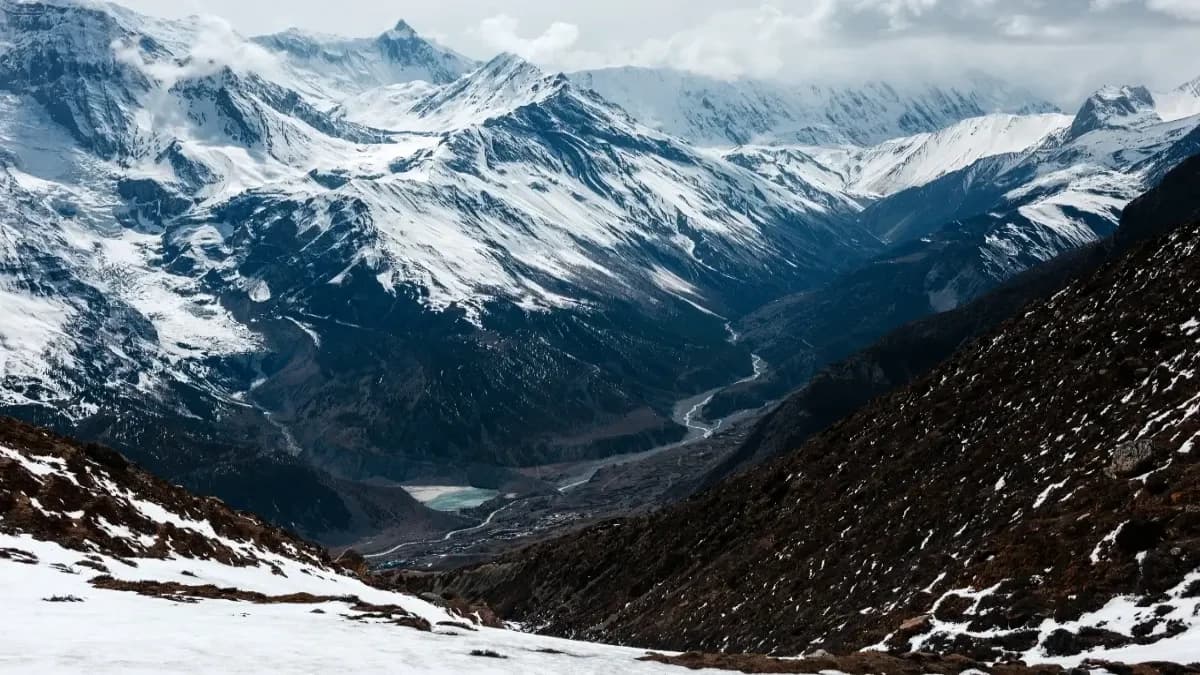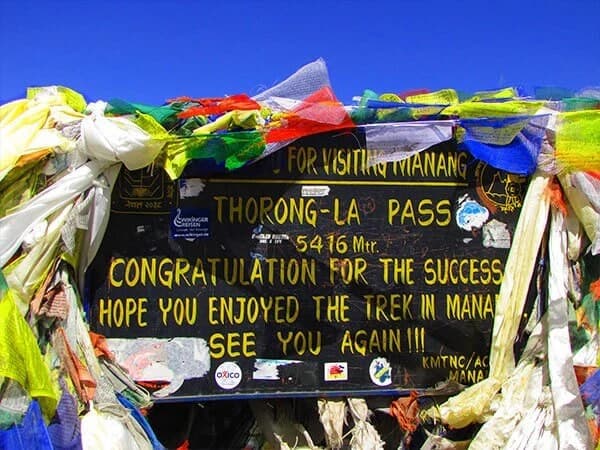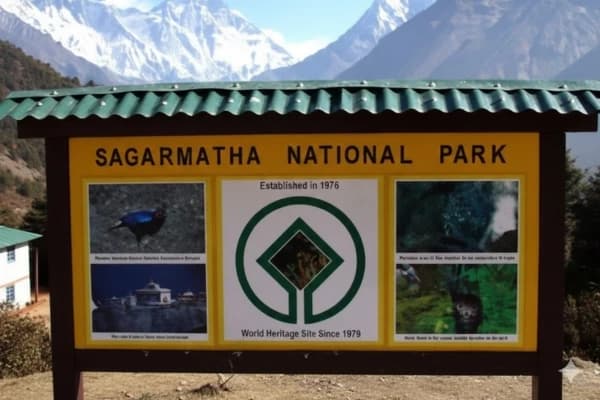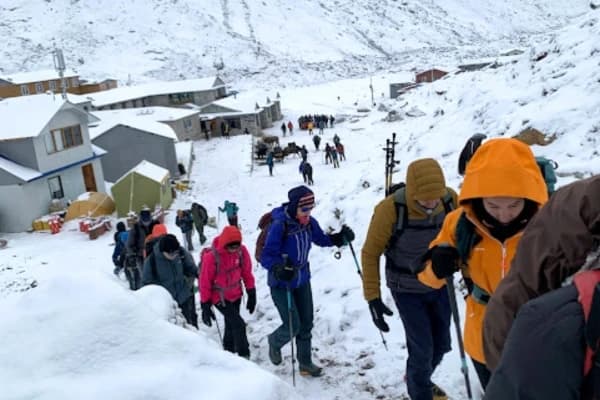If you’re asking, can I trek the Annapurna Circuit without a guide in 2025? The answer is straightforward: No. All international trekkers on the Annapurna Circuit must employ a licensed, TAAN-certified guide as of 2023, under Nepal's trekking laws. The prospect of a solo hike around the Annapurna Circuit was essentially eliminated by this policy. Trekkers used to be able to get by on their own with just a map and a backpack, but these days it's against the law and dangerous.
One of Nepal's most famous long-distance routes, the Annapurna Circuit draws travelers with its expansive Himalayan vistas, varied cultures, and natural wonders, including the Kali Gandaki Gorge, Thorong La Pass (5,416 m), and Muktinath Temple. The revised Annapurna Circuit trekking regulations guarantee that every hiker receives the right direction, safety, and support, even if the trail has always offered excitement.
Don’t risk confusion or delays on your trek; secure a licensed guide from Nepal Gateway Trekking and start planning your Annapurna adventure before slots fill up for the peak season!
The Annapurna Circuit Without a Guide in 2025
Can you go on a solo trip along the Annapurna Circuit in 2025? The short answer is no. In 2023, the Annapurna Circuit Trek regulations were revised by the Nepal Tourism Board (NTB) and the Hiking Agencies’ Association of Nepal (TAAN) to forbid trekking alone.
Trekkers used to be able to hike on their own with just an ACAP permission and a TIMS card. These days, authorized organizations issue both permits, connecting each hiker with a certified guide. Although there have been unofficial reports of solo trekkers in some isolated locations, doing so is completely prohibited and extremely dangerous.
Why Did Nepal Ban Solo Trekking?
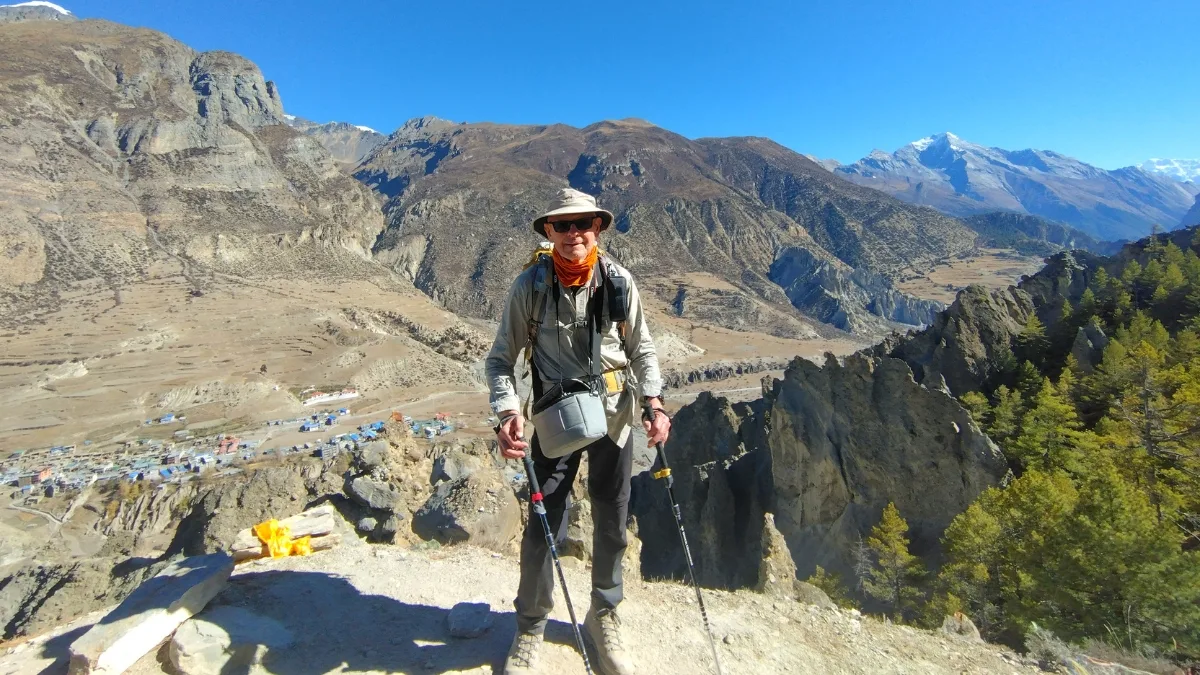
To increase safety and protect the hiking experience, Nepal banned trekking alone. The regulation ensures trekkers have the right support and direction while lowering the danger of mishaps, altitude sickness, and missing routes in areas like the Annapurna Circuit.
Safety Concerns
Trekking in areas like the Marshyangdi Valley, the Kali Gandaki Gorge, and the Thorong La Pass presents risks. Historically, hikers have been put at risk by altitude sickness, becoming lost, and accidents on isolated treks. The safety of solo trekking in Nepal has long been a worry, particularly in isolated villages like Manang, Chame, and Braga, and high crossings like Thorong La.
That’s why authorities guarantee quicker assistance, acclimatization management, and safer navigation by regulating guides.
Economic Reasons
Requiring a guide supports local employment. Licensed guides and porters play a huge role in Nepal’s trekking industry, and the new policy helps sustain their livelihood. This aspect of the Nepal trekking guide requirement is just as important as safety.
Application to Annapurna Circuit
In the Annapurna Conservation Area Project (ACAP), the ban applies strictly. Combined with the TIMS system, it means every trekker on the Annapurna Circuit must be linked to a trekking agency and a registered guide.
What Permits Do You Need for the Annapurna Circuit?
Permits are mandatory for all travelers who trek the Annapurna Circuit. Even with a guide, you’ll need the required documents like an ACAP and a TIMS card to access the region and pass through checkpoints.
ACAP (Annapurna Conservation Area Permit)
The ACAP charge benefits park management, local communities, and conservation. The cost is about NPR 3,500 for each foreign trekker in 2025. This is typically included in the bundle by licensed agencies.
TIMS Card (Trekkers’ Information Management System)
Once available on an individual basis, TIMS is now only provided to trekkers with guides through agencies. This guarantees that, for safety reasons, authorities can keep an eye on the whereabouts of trekkers.
Individual vs. Group Trekking Permits
Independent hiking was once possible since individual hikers could independently get ACAP and TIMS permits. Permits are now only granted by licensed agencies in accordance with the Annapurna Circuit regulations for 2023.
- Group Permits: A registered guide and agency must be associated with at least one trekker. For the purpose of issuing permits, trekkers are regarded as a "group," ensuring safety supervision and commitment to the law.
- Individual Permits: Solo permits no longer exist for the Annapurna Circuit. Independent trekking without a guide is illegal, and the permits cannot be issued to a lone traveler.
Permits are limited and linked to guides, lock in your package today with Nepal permit information to ensure a smooth, worry-free trek.
Is Trekking Without a Guide Safe or Risky?
Trekking the Annapurna Circuit without a guide is risky. While some attempt it, the dangers from getting lost, altitude sickness, and emergencies make having a guide the safer choice.
Benefits of Solo Trekking
- Full freedom to set your own pace and itinerary throughout the trek.
- Lower overall cost since you’re not paying for a guide or other agency logistics costs.
- Opportunity for a more personal, independent adventure.
Challenges of Solo Trekking
- Higher chance of getting lost or missing the trail.
- Not much help if there’s an emergency or health problem.
- Harder to deal with permits, local rules, and customs.
- You might miss out on learning about local culture, history, and secret spots.
If you want to trek Annapurna Circuit but don't know which Annapurna trek agency is trust worthy, then you can rely on Nepal Gateway Trekking. We are registered trekking agency in Nepal with decades of experience and happy trekkers.
Cost Comparison: Guided vs. Unguided Annapurna Trek
A big factor for many trekkers is cost. In the past, avoiding the Nepal trekking guide requirement saved money. Now, only guided options are available.
|
Category |
Guided Trek (2025) |
Unguided Trek (Before Ban) |
|---|---|---|
|
Price |
From US$1,240 per person (18-day trek with Nepal Gateway Trekking) |
About US$800-900, depending on what you choose |
|
What’s Included |
Guide, porter, ACAP & TIMS, transport, teahouses, meals, hotels, permits |
Only the permits, places to stay, and meals you book yourself |
|
Extra Costs |
$15-20 per day for personal stuff, gear, tips |
$15-25 per day for meals, lodging, and transport |
|
Safety & Support |
Emergency help, cultural tips, and organized plans |
No help if something goes wrong |
|
Legality (2025) |
Legal and required |
Not allowed |
Guided treks also include porter services, which lighten your load, and ensure access to high-altitude trekking insurance with helicopter evacuation coverage—a must-have for safety on passes like Thorong La.
Guided treks fill up fast, especially in spring and autumn; book your guide now to guarantee availability and avoid last-minute price hikes.
Explore our Short Annapurna Circuit Trek - 11 Days if you are less on time.
Do You Really Need a Guide if You Are Experienced?
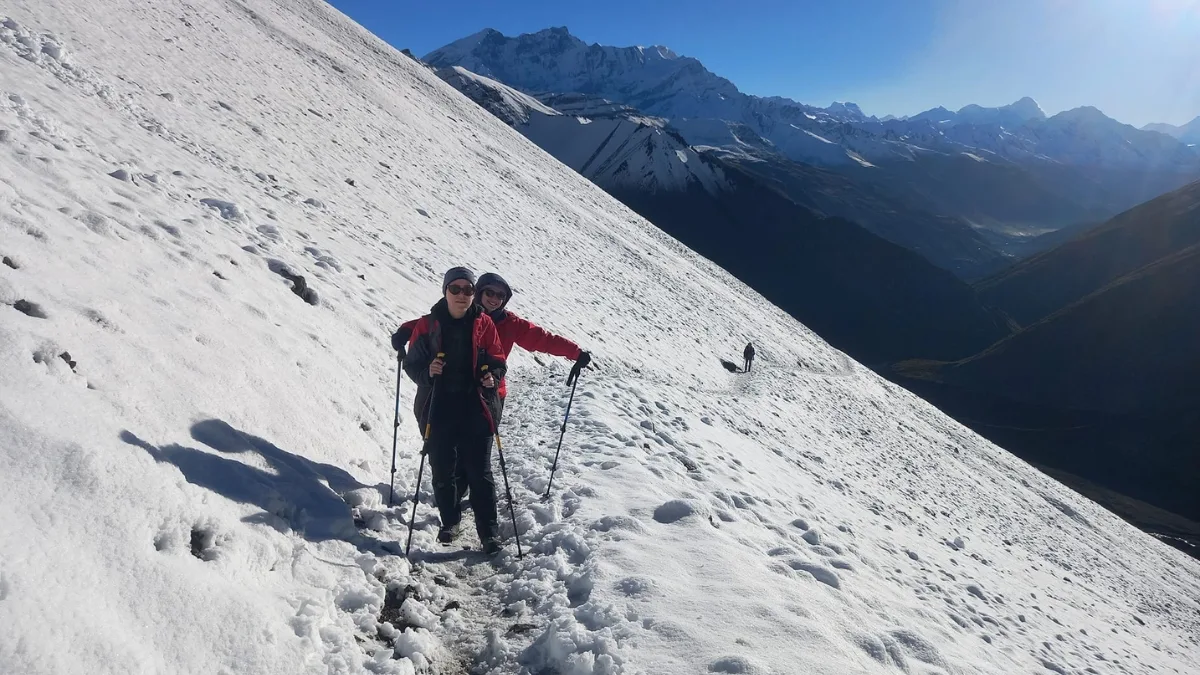
Some hikers argue that they are skilled enough to trek without assistance. However, the Nepal trekking guide requirement applies to everyone, regardless of skill. Even the most seasoned mountaineers must hire guides when trekking in restricted areas.
The law is absolute for the Annapurna Circuit: the trekker's experience level does not exempt them from needing a guide.
Alternatives to the Annapurna Circuit Without a Guide
If you prefer trekking solo, there are safer alternatives to the Annapurna Circuit. These options let you enjoy Nepal’s trails without the high risks of going completely solo.
- Short Treks Still Open for Solo Trekkers
Treks like Poon Hill and Mardi Himal may still allow independent trekking, depending on enforcement updates. They are shorter, lower in altitude, and closer to Pokhara, making them safer for solo trekkers.
- Long Day Hike around Kathmandu and Pokhara
Independent trails like Nagarkot, Shivapuri, Dhampus, and Sarangkot are ideal day hikes. These do not require the same permits as the Annapurna Circuit and remain open to solo travelers.
Best Time to Trek the Annapurna Circuit (With a Guide)
Selecting the right season makes a huge difference on the Annapurna Circuit. With a guide, you can enjoy the trek safely while experiencing the best weather, clear mountain views, and vibrant landscapes.
- Spring (March–May): Enjoy blooming rhododendron forests, mild weather, and stunning mountain views.
- Autumn (Sep–Nov): The most popular season with clear skies, crisp air, and the best visibility of the Himalayas.
- Winter & Monsoon: Winter brings heavy snow over Thorong La Pass, making high-altitude sections risky, while monsoon trails are slippery and prone to landslides. Making these seasons less suitable for trekking.
Learn about the Annapurna Circuit Trek Distance Guide by Nepal Gateway Trekking.
Practical Trekking Tips for 2025
For the Annapurna Circuit trip to go smoothly, preparation is key. These helpful hints help you stay safe, comfortable, and ready for the difficulties of high-altitude hiking. That includes things like packing the appropriate equipment and setting up insurance to managing daily distances and acclimatization.
- Altitudes & Distances: Total distance ~230 km over 16–21 days. Key points:
- Marshyangdi Valley: Start your trek through lush fields and villages for gradual acclimatization.
- Chame, Braga, and Manang: Important for rest and acclimatization.
- Thorong La Pass (5,416 m): Highest point; plan rest days before attempting the pass.
- Jomsom & Upper Mustang: Scenic valleys and desert landscapes; cultural highlights and Muktinath Temple are a must-visit.
- Packing Essentials: Layered clothing, trekking boots, poles, first-aid kit, and high-altitude gear.
- Insurance: High-altitude trekking insurance with helicopter evacuation is critical.
- Oxygen & Emergencies: Carry supplemental oxygen if needed; know emergency helipad locations.
- Daily Expenses: ~$35 to $45 per day for meals, tips, and personal items.
Final Thoughts
So, in 2025, is it possible to trek the Annapurna Circuit without a guide? No, you are unable to. The once-popular Annapurna Circuit solo trek is now a thing of the past because of the regulations requiring all trekkers to hire a professional guide.
The benefits of hiking with a guide include increased safety, a deeper understanding of the local culture, and dependable logistics. Additionally, you will help local people and guarantee an improved experience if you follow the Annapurna Circuit trekking laws.
The Annapurna Circuit won’t wait; plan responsibly with a registered agency like Nepal Gateway Trekking today and experience this legendary trek safely and fully prepared. Contact Today!
